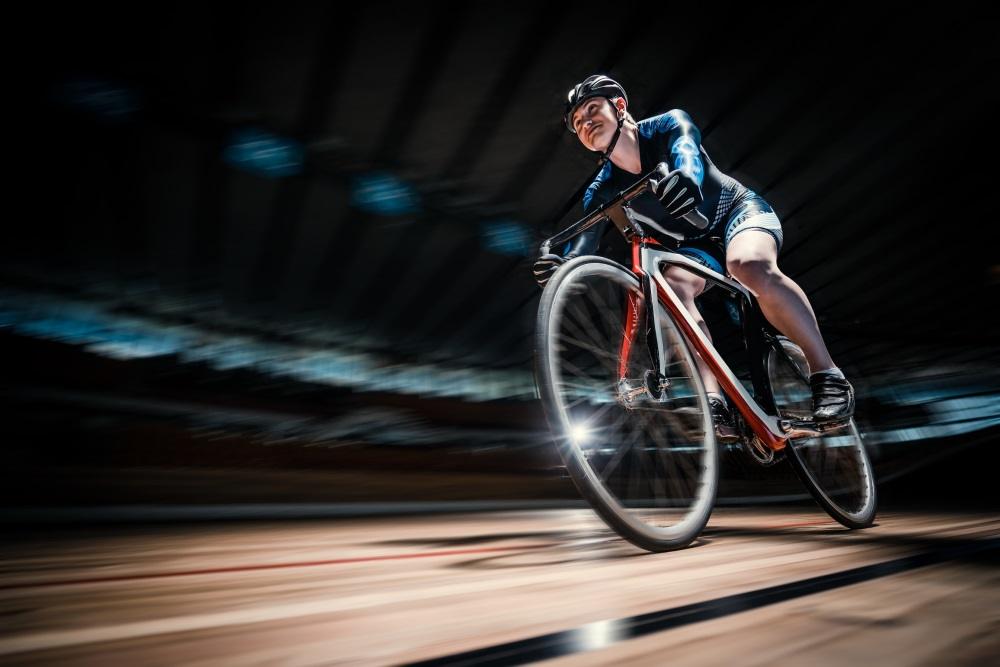- You are here:
- Home »
- Bike Trainers
- » Choosing A Bike Trainer

Choosing A Bike Trainer
Portable, smooth, quiet, affordable—different folks have different tastes while choosing the best indoor bike trainer for them.
There are four common types of indoor bike trainers:
- Wind – The cyclist powers a fan that provides resistance.
- Magnetic – A fixed resistance is offered by a magnetic flywheel.
- Fluid – Silicon within the unit offers resistance.
- Rollers – The unattached bike is balanced on top of three cylinders.
Even within these four broad categories, there is a wide range of choices. Magnetic and fluid trainers, in particular, go from fairly simple models with a handlebar-mounted remote to vary the resistance, all the way up to smart-bike-trainer enabled versions that pair to your computer, track power, and offer downloadable workouts. Here are some basic guidelines to choose a bike trainer that suits your needs.
- Consider a wind trainer or simple magnetic model if you just need a basic model for pre-race warm-ups. The folding legs for easy portability, which is an added advantage.
- Consider rollers if you want to work on your pedal stroke. Rollers will help you immensely to smoothen out your clunky cadence.
- Consider a fluid trainer that tracks power output, or a smart trainer that pairs to your computer if you need to do structured workouts.
- Consider a smart trainer that can interface with independent training programs wherein you can ride or race along with if you tend to get bored easily riding indoors.
Some other items to consider while choosing a bike trainer are:
- Compatibility: With axle attachment standards and widths changing almost yearly, check whether a trainer you’re interested in offers different attachment options such as thru-axle adaptors and different free-hub options for direct-attachment trainers.
- Functionality: Is it easy to get your bike on and off the trainer?
- Smoothness and Sturdiness: Some trainers are a little smoother than others. And of course, a cyclist’s pedal stroke can go a long way toward cutting down on the choppiness and instability aboard a trainer.
- Storage: Some trainers have folding legs for easier storage (some rollers fold in half as well). That can add modest amounts to the cost.
- Noise: All trainers make noise, and produce vibrations that may be annoying to others around you. Particularly if you live in a building with shared walls or floor/ceilings, pay attention to how much noise and vibration a trainer produces.
- Stability: Trainer crashes are rare, but not unheard of when you’re going cross-eyed trying to beat your PR on that workout. Typically, the broader the base, the more stable.
- Price: How much are you willing to invest?
Accessories
There are a lot of accessories, from the essential (axle attachment inserts) to the obscure (a storage bag). Here are a few basic ones you might want to consider, prioritized by importance:
- Axle attachment inserts: Some trainers that attach via the rear wheel can accommodate different axle standards and offer inserts for that purpose. Make sure the trainer you are buying has compatible options for the bike or bikes you want to use it with.
- Front wheel block: You can use a stack of phone books as a front wheel block and it would work, but a dedicated leveling block is a lot more stable and not very expensive.
- Sensors: You can buy a basic unit now and upgrade it later with sensors for things like power, cadence, or even virtual speed, which can transform basic units into smart trainers that work with training programs.
- Floor mat: It protects your floor from scratches and sweat, and absorbs a bit of vibration. It is useful for nice floors and apartments.
- Trainer tire: Trainers rely on friction to produce resistance, so they’re much harder on tires than road miles—they not only wear out tread, but will flex casings to the point that they can eventually fail. If you have high-end tires on your bike and are riding inside most of the winter, consider a trainer-specific tire, which has a beefier casing and tread. They’re typically not recommended for outdoor use.
Conclusion
In the end, an indoor trainer is a great tool to keep your cycling sharp even when the days get short and the weather freezes the roads. Making sure you pick the best trainer for your needs will go a long way in making your winter as active as ever.





